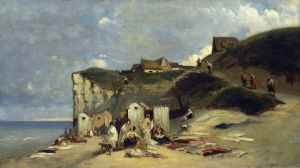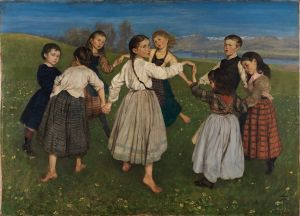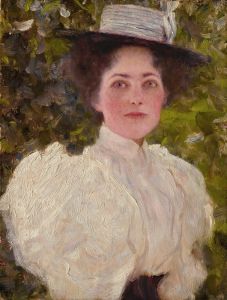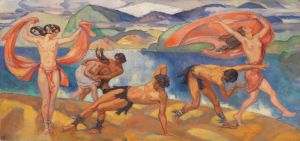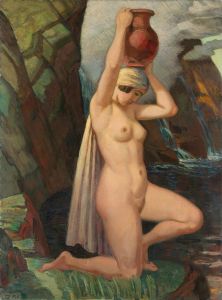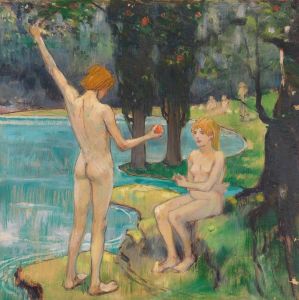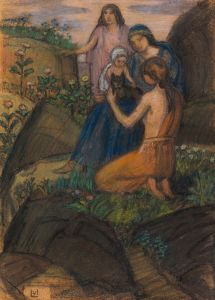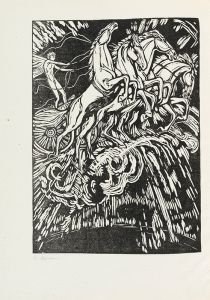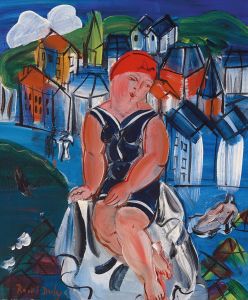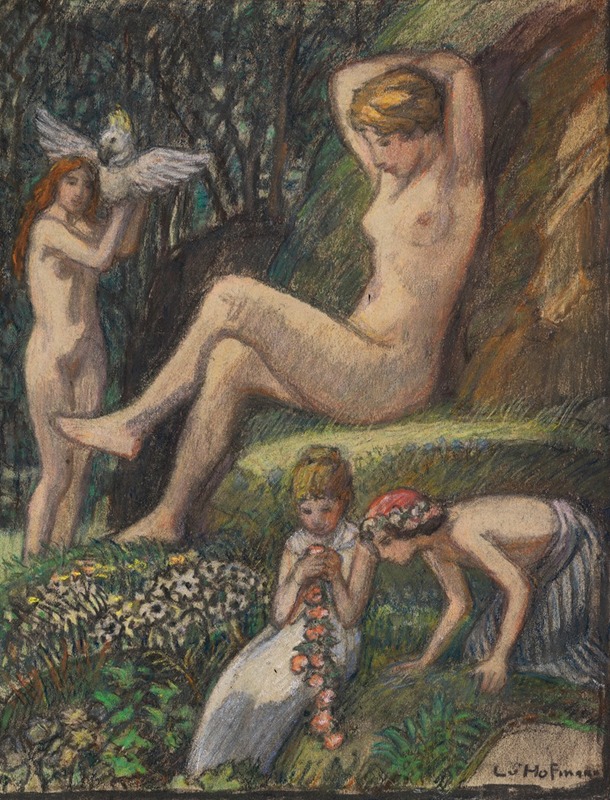
Frühlingsidylle mit Badender und Blumenkindern
A hand-painted replica of Ludwig von Hofmann’s masterpiece Frühlingsidylle mit Badender und Blumenkindern, meticulously crafted by professional artists to capture the true essence of the original. Each piece is created with museum-quality canvas and rare mineral pigments, carefully painted by experienced artists with delicate brushstrokes and rich, layered colors to perfectly recreate the texture of the original artwork. Unlike machine-printed reproductions, this hand-painted version brings the painting to life, infused with the artist’s emotions and skill in every stroke. Whether for personal collection or home decoration, it instantly elevates the artistic atmosphere of any space.
Ludwig von Hofmann was a prominent German painter and graphic artist associated with the Jugendstil movement, which is the German counterpart of Art Nouveau. His works are known for their idyllic and often mythological themes, characterized by a harmonious blend of nature and the human form. One of his notable works is "Frühlingsidylle mit Badender und Blumenkindern" (Spring Idyll with Bather and Flower Children), which exemplifies his style and thematic interests.
"Frühlingsidylle mit Badender und Blumenkindern" captures a serene and enchanting scene that reflects Hofmann's fascination with the beauty of nature and the human body. The painting depicts a tranquil spring setting, where a bather is surrounded by children adorned with flowers. This composition is typical of Hofmann's work, which often features figures in harmonious interaction with their natural surroundings. The use of soft colors and flowing lines in the painting creates a dreamlike atmosphere, inviting viewers into a world of peace and beauty.
Hofmann's work is often associated with the broader Symbolist movement, which sought to express the mystical and emotional aspects of human experience through art. In "Frühlingsidylle mit Badender und Blumenkindern," the idyllic setting and the presence of flower children can be interpreted as symbols of purity, renewal, and the eternal cycle of life. The bather, often a recurring motif in Hofmann's work, represents a return to nature and a celebration of the human form in its most natural state.
The painting reflects Hofmann's interest in classical themes and his admiration for the art of ancient Greece and Rome. This influence is evident in the idealized forms of the figures and the emphasis on beauty and harmony. Hofmann's work often blurs the line between reality and fantasy, creating a timeless quality that resonates with viewers.
Ludwig von Hofmann was a significant figure in the German art scene during the late 19th and early 20th centuries. He was a member of the Berlin Secession, a group of artists who sought to challenge the conservative art establishment of the time. His work was well-received, and he held several teaching positions, including a professorship at the Weimar Saxon-Grand Ducal Art School, where he influenced a generation of artists.
"Frühlingsidylle mit Badender und Blumenkindern" is a testament to Hofmann's skill in capturing the essence of an idyllic world, where nature and humanity exist in perfect harmony. The painting continues to be appreciated for its aesthetic beauty and its ability to evoke a sense of peace and tranquility. Through his art, Hofmann invites viewers to escape the chaos of the modern world and find solace in the timeless beauty of nature.
Overall, Ludwig von Hofmann's work, including "Frühlingsidylle mit Badender und Blumenkindern," remains an important part of the art historical canon, celebrated for its contribution to the Jugendstil movement and its enduring appeal.





